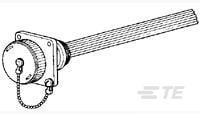Sinistar
En-Route
- Joined
- Sep 9, 2016
- Messages
- 3,712
- Display Name
Display name:
Brad
A friend recently sold her Citabria  and sold us her Battery Minder. Yes, the unit specifically for the Concorde battery which we both had in common. But this question should be relevant to almost all tender brands.
and sold us her Battery Minder. Yes, the unit specifically for the Concorde battery which we both had in common. But this question should be relevant to almost all tender brands.
#1. I know some owners who place (and even permanently mount) the control unit inside the aircraft. They then bring the AC power cord through a port or window or door.
#2. In past I installed the DC quick disconnect to the battery and pass that out the baggage door and the control unit sits outside the plane.
Is there any reason to favor one over the other?
This is for a Skylane so battery is in back and room for either option.
I'm leaning towards #2 again. Was going to ask AP to put in a small bulkhead quick disconnect for the DC plug so I don't have to pinch it in the baggage door anymore.
#1. I know some owners who place (and even permanently mount) the control unit inside the aircraft. They then bring the AC power cord through a port or window or door.
#2. In past I installed the DC quick disconnect to the battery and pass that out the baggage door and the control unit sits outside the plane.
Is there any reason to favor one over the other?
This is for a Skylane so battery is in back and room for either option.
I'm leaning towards #2 again. Was going to ask AP to put in a small bulkhead quick disconnect for the DC plug so I don't have to pinch it in the baggage door anymore.

